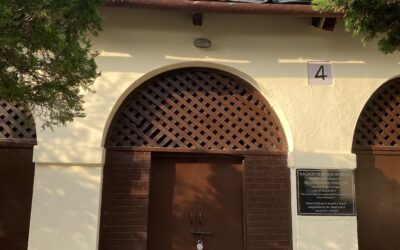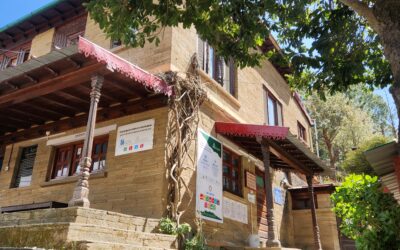Migration for work is etched into the identity of several districts that fall within the perimeter of Southern Rajasthan’s tribal belt. Hundreds of private buses ply each day, carrying thousands across borders to cities like Ahmedabad, Surat and Mumbai. A range of push factors act as the fuel that drives migration within Southern Rajasthan, key among them – lack of options for local non-farm employment, compounded by shortcomings in rural employment programmes like MGNREGA, and almost non-existent prospects for profitable agriculture due to small or marginal land holdings.
While these factors make up the threads that form the fabric of rural reality across the region, within the Banswara District of southern Rajasthan, these, mixed with a few others, have led to the emergence of one distinct feature of migration that makes it stand apart from the rest – the movement of women and entire households.
In the vast majority of districts across the region, migration is exclusively the domain of the man. In Banswara however, this is far from true. Regardless, google searches turn up little, if anything, in the form of official government data recording the scale of female labour migration in the region – perhaps a product of the continued male centricity of the discourse around migration, or a more general systemic indifference.
Why do the numbers matter though? Because for as long as the they go unrecorded, so do the realities of the lives that make up those numbers and a recognition of the need for interventions.
Data gathered by Aajeevika Bureau from over three thousand migrant workers suggests that women constitute approximately 35% of the labour force that migrates out of Banswara. Based on other estimates however, this number is expected to be much higher. What makes Banswara different from all the other districts? It largely comes down to one predominant factor – extreme water shortage during summer months.
Though home to one of the largest dams in the state – the Mahi Bajaj Sagar dam – rural Banswara is yet to enjoy the fruits of its proximity to it. Agriculture in the region remains primarily rain-fed, and hence, seasonal – this seasonality of agriculture being closely tied to the seasonality of migration. While land-owning migrant labourers may return at the beginning of monsoon, crops are seldom sown in the summer.
“During harsh summer months,” I’m told, “dry patches of the district’s Kushalgarh block begin to mirror abandoned settlements – ghost towns,” as families either move to areas with easier access to water or migrate to cities.
Life in the City
In the city, the migrant worker is the blood that gushes through the arteries of its informal economy. Close to 80% of the labour force migrating out of Banswara finds employment in the construction sector, while the rest work in farms, factories, hotels and restaurants. A vast majority of this labour force is absorbed by Ahmedabad, followed by Surat.
In the cities they migrate to, workers typically find themselves living in poor conditions, lacking even the most basic of amenities, including sanitation and access to safe drinking water. Lack of affordable housing options means that most have to live in make-shift shanties built near work sites, or out in the open; left vulnerable to theft and accidents in the dark of the night.
96% live out in the open. 89% defecate in the open. 10.7 pay to use public toilets.
Source: Data collected by Aajeevika Bureau from over 168 women migrant workers in Kushalgarh
Women suffer the most from these arrangements – with bodies at risk of assault at both, workplaces, and spaces they call home. Kushalgarh’s Tara bai*, narrates an incident of attempted sexual assault on her while she slept on the streets of Bangalore, her husband sleeping only a few feet away. While Tara bai managed to escape the grip of her assaulter, many aren’t as fortunate. Over the past year, Aajeevika Bureau’s office in Kushalgarh has recorded multiple incidences of violence and sexual assault perpetrated in the region, including some with adolescent victims.
Their relative lack of safety in the village when left behind and living alone, is one of the factors pushing women to migrate in the first place. Incidences of violence against women however, are much more likely to go unreported in cities than back home, owing to the largely disenfranchised status of migrant women within cities and absence of support systems. Many typically refrain from sharing such experiences with spouses and families, over fear of how they’d respond.
While Tara bai has not migrated back to the city since, few have the privilege of choice. Local employment, offered through programmes like MGNREGA, at wages as low as 220 rupees a day, is seldom enough to sustain typically large families. This is compounded by poor implementation of such programmes, alongside other social security provisions like PDS. Even in a year when migrant workers were present in the district in record numbers through the summer months, official state records indicate that employment generated per household in FY 2020-21 is lower than that of the preceding year.
Data gathered by Aajeevika Bureau from over 9000 migrant workers from Banswara shows that, in the city, 86% of this group earns between ₹5000-10,000 a month. A third of this income, however, is spent on living expenses, including food. Typically bought from wayside stalls, food is generally both expensive and unhealthy. Cutting down on the number of meals eaten per day is a common practice adopted to limit expenses, or to avoid needing a toilet.
Inadequate diets, coupled with poor living and working conditions, significantly increases health risks that a migrant worker faces. Crowded spaces and dusty worksites become breeding grounds for chronic respiratory illnesses like Tuberculosis (TB).
Until recently, non-portability of ration cards also meant that once they migrated, families no longer had access to the ration they were entitled to. The recently launched ‘One Nation One Ration Card‘ scheme, which would allow ration card holders covered under the National Food Security Act to access their entitlements from anywhere in the country, is a welcome step in this context. However, how this shall play out for migrant families living out in the open is yet to be seen.
Silver lining?
We may see a silver lining, perhaps in the woman migrant worker’s financial autonomy? While it may seem so, narratives suggest that women seldom have control over the money they make. Data also points towards the existence of a sharp wage gap. On an average, women make about ₹2000-3000 less than their male counterpart.
Another crucial implication of household migration is its impact on the lives of children within migrating households who, when taken along, drop out from school at young ages and live in largely unsafe conditions in the city.
For Laluram*, who has been migrating from Banswara to Ahmedabad since the age of 14, or for the many Tara bai’s of Banswara, life in the city is by no means one to be coveted. And yet it keeps pulling them back. Given the lack of robust sources of income back home, the choice that Laluram or Tara bai have to make, it seems, is between the devil and the sea. And as things stand, this too is not more than an illusion of a choice.
But the distress migration in Banswara, or the bitter life that the city offers to the migrant worker building it, are by no means wicked problems. There exist fairly straightforward solutions like establishing public housing systems. And yet somehow, this year, and the next, we’ll be witnesses to the brutal irony of Tara bai and her many counterparts from across the nation building grandiose mansions in the heart of Delhi, only to go right back to spending nights under the nearest flyover.
*Name changed to maintain confidentiality






0 Comments